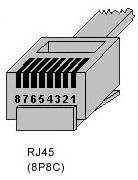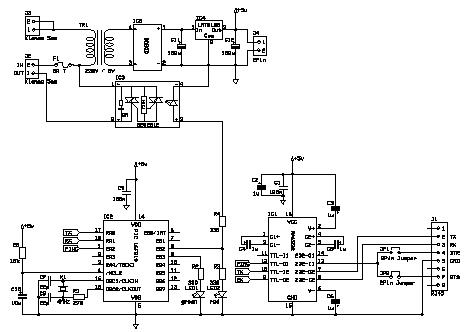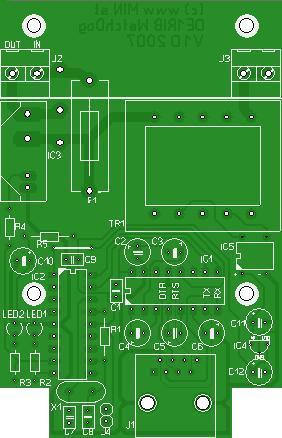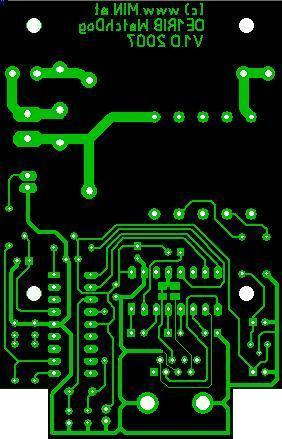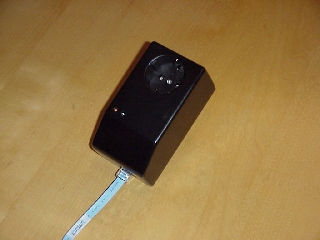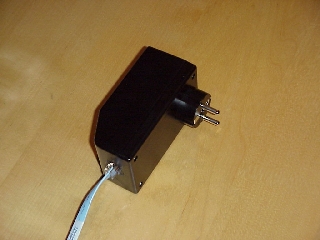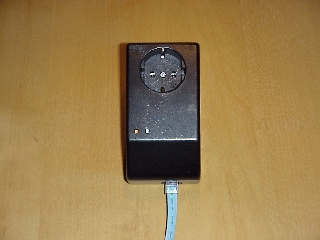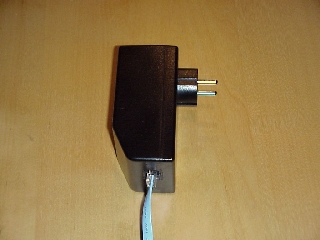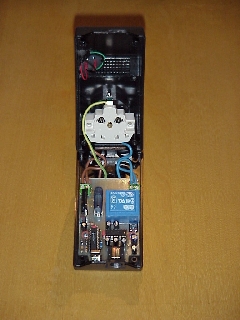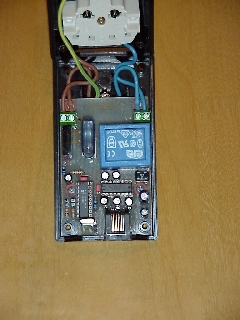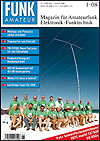To change a configuration parameter press the character before the ':' (colon). If this parameter is
a flag it just toggles its value and the configuration overview is displayed again. In case of a
character or a numeric value you will see a prompt where you can change the value.
To change a character just press the character at the "press character" prompt. Escape cancels
the input and could not be used as input.
At this prompt you can enter a numeric value in the range 000 - 999. Enter accepts the value,
escape cancels the input, backspace can be used to correct the value.
| Character |
Parameter |
Description |
| a |
On/Off mode |
Allows turning output power on and off by sending a ON or OFF character
to the WatchDog. If WatchDog mode is set to YES the on or off state must
be acknowledged within [TimeOut] by using the ON, OFF, OK characters or if
OK with every Character is set to YES with any character. |
| b |
WatchDog mode |
Enables the [TimeOut] and [Grace] parameters. WatchDog must be triggerd by
either the OK character, any character (if OK with every Character is
set to YES or by the ON or OFF character if On/Off mode is set to
YES. |
| c |
OK with every Character |
Allows triggering or acknowledgement of power output by any character sent to
the WatchDog |
| d |
OK by level change on Pin |
The WatchDog can also be triggered or acknowledged by a level change on either
the DTR or RTS line of the RS232. To configure which signal should be used a jumper
must be soldered on the PCB. |
| e |
Show prompt |
Display Prompt Character every time the WatchDog is triggered, a [Grace] period
ends or a power cycle occures. |
| f |
Show LED status |
Include the current LED status in the prompt in the form of !#[Prompt Character].
So if promt is set to > and [Grace] = 3 the output would be !3> |
| g |
Start with output power on |
If set to YES output power is on if the WatchDog is plugged into a 220V Socket |
| h |
Start Delay (seconds) |
After pluggin the WatchDog into a 220V socket wait this much seconds. This parameter
also specifies the duration of the power cycle (how many seconds output power should be
turned off) |
| i |
Prompt Character |
Which character to use as prompt. See also Show prompt parameter |
| j |
OK Character |
Which character should be used as OK from the server. |
| k |
ON Character |
The character to be used to turn output power on |
| l |
OFF Character |
The character to be used to turn output power off |
| m |
Timeout (seconds) |
How many seconds to wait for a WatchDog trigger |
| n |
Grace period (count) |
How many times Timeout can go by without a WatchDog trigger. |
When you are finished configuring the WatchDog press enter to save the settings or
press escape to discard all current changes. After enter or escape the WatchDog resets
and starts like it was plugged into a 220V socket.
The WatchDog uses 2 LED's to show it's status. A red LED indicates 220V output power and a green LED
shows the current WatchDog status.
| Status LED's |
Description |
  |
Red LED off, green LED off: In normal operation output power turned off using OFF character
or no 220V input power. |
  |
Red LED steady, green LED off: Normal operation, WatchDog is receiving heartbeats or in
On/Off mode set to YES and WD mode turned off output power turned on by using
ON Character. |
  |
Red LED steady, green LED blinking every second: No heartbeat received for [TimeOut] seconds,
[Grace] is >= 3, output power supplyed. |
  |
Red LED steady, green LED blinking every 500ms (1/2 second): No heartbeat received for [TimeOut] seconds,
[Grace] is = 2, output power supplyed. |
  |
Red LED steady, green LED blinking every 200ms (1/5 second): No heartbeat received for [TimeOut] seconds,
[Grace] is = 1, output power supplyed. |
  |
WatchDog performing a power cycle, WatchDog has not received a heartbeat for [Timeout] * [Grace] seconds,
no output power supplyed |
